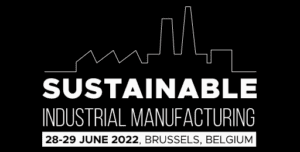Four Key Factors for 2022 Manufacturing ESG
A version of this article was originally published in Sustainability magazine.
With the ongoing global pandemic and deteriorating climate conditions, the importance of ESG has even greater significance today. We all know some of the most common issues driving corporate ESG initiatives, like high carbon emissions, water scarcity, fossil fuel availability, severe weather conditions causing service disruptions, inefficiency, and waste management.
But there are other driving factors creating a heightened focus on ESG. Let’s explore four of the most prominent factors making ESG initiatives a top concern in manufacturing this year, and how technology can help successfully implement these initiatives.
Increasing purchaser (and customer) demands
Purchasers are asking for more information around ESG goals than ever before, and not just from a sustainability perspective. In the past few years, there has been a large spike in companies asking their suppliers to reveal any substantial environmental impacts.
In 2020 alone, there was a 24% increase in large scale purchasers asking their suppliers to report environmental data compared to 2019. Companies like Nike, Walmart and Microsoft, some of the biggest buyers in the world, are now driven not just by a greater awareness of the impact of any environmental risks on their business, but also by the need to please their ever-more discerning customers.
Data from PWC revealed that younger consumers between the ages of 18 and 38 are almost twice as likely to consider ESG issues when making purchasing decisions than consumers over 38 years old.
Today, transparency around ESG practices goes hand-in-hand with companies providing consumers with simple product and manufacturing information. The demand for ESG data is only going to increase from here.
Hefty regulatory fines and government monitoring
Substantial regulatory fines are predicted to impact companies that don’t comply with ESG initiatives. Laws around due diligence are already being contemplated for companies operating in the European Union (EU). For example, more than 70 countries have put legislation in motion for plastics reduction, and 170 nations have pledged to “significantly reduce” use of plastics by 2030.
Additionally, the Securities and Exchange Commission (SEC) announced last year the creation of a Climate and ESG Task Force in the Division of Enforcement that will develop initiatives to proactively identify ESG-related misconduct. The task force will also analyze disclosure and compliance issues relating to investment advisers’ and funds’ ESG strategies.
With hefty regulatory fines and the introduction of different ESG initiatives and laws, it will soon become a requirement for manufacturers and other companies to meet goals around sustainability in order to avoid costly penalties.
Pressure on boardroom and C-suite executives
With global sustainable investment now topping US$30tn – up 68% since 2014 and 10x since 2004 – there is mounting pressure on boardroom directors and c-suite executives for sustainable investments. Approximately 57% of CFOs alone have made it a priority to invest in ESG efforts since the start of 2020, with 23% of those saying that ESG investments are more important for their organizations now than before 2020.
Companies are also beginning to tie executive compensation to ESG goals and key performance indicators (KPIs).
This further increases the need to define and implement meaningful ESG strategies. According to PWC, 45% of the Financial Times Stock Exchange (FTSE 100) companies now have an ESG measure in executive pay, meaning executives are rewarded with financial incentives to help move the company’s ESG agenda forward.
The changing labor force
The labor force is changing, particularly due to a shortage brought on by the “great resignation” and “grey tsunami.” The latter is expected to increase the number of late-career workers retiring, resulting in a U.S. manufacturing skills gap that could leave as many as 2.1 million manufacturing jobs unfilled through 2030.
When choosing jobs, younger generations show a strong preference toward companies with a focus on sustainability and ESG goals in place.
In fact, approximately 76% of millennials consider ESG commitments when deciding where to work. Millennials and Gen Z make up 46% of the full-time U.S. workforce now and are predicted to jump to 74% of the workforce by 2030.
It will become increasingly important for companies to commit to ESG initiatives in order to fill the talent pipeline, especially with younger generations.
The role of technology in implementing ESG initiatives
In order for manufacturers to achieve the visibility, traceability and data needed to establish and maintain ESG initiatives, implementing new technologies will be imperative. Connected worker digital tools, artificial intelligence (AI), internet of things (IoT), connectivity, blockchain and 5G are making it easier for manufacturers to secure vital information around their supply chains, environmental impact and the safety of frontline workers.
Leveraging technologies that can quickly scale will be key; the four factors outlined above are only going to grow at an accelerated rate.
For example, by digitizing standard operating procedures (SOPs) that are used every day by workers on production lines, corporate teams can have more data and visibility into how their ESG commitments are actually being achieved.
This information can be updated in real time to ensure best practices are maintained across material use and safety.
A watershed moment
This shift in focus to sustainable development and ESG goals for companies, including manufacturing, is a watershed moment in history. Addressing these four factors by building robust, sustainable and attainable ESG initiatives, that are supported by the right digital tools and technology, will be table stakes.
Learn more about how Parsable helps industrial companies with their ESG and sustainability goals.
Want to learn more about operational excellence? Read more about the approach that encompasses all of the solutions you’ll need to maximize efficiency, improve worker safety and create a higher standard of production quality.







